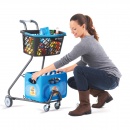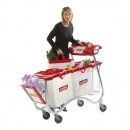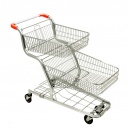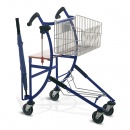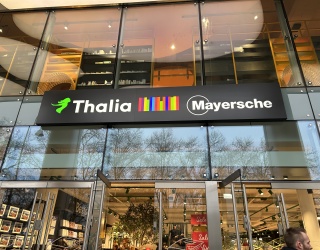Bulky and unwieldy carts are a thing of the past. Although shopping carts are still metal wire baskets on wheels, the number of different types of carts has increased. Shopping carts need to adapt, both to customer needs and the corporate identity of the store.

Integrating shopping carts into the store concept
The decision for a particular model primarily depends on two factors: the overall concept and the needs of customers. Shopping carts need to be seamlessly integrated into the store concept. Small shopping carts that are more ergonomic make sense for special city markets. They need to be lightweight and flexible so they can be maneuvered through the narrow aisles. Unlike in large hypermarkets or non-food markets where basket size is crucial: bigger is better in this case. But even these types of carts should be easy to maneuver.
Different countries prefer different types of shopping carts. Scandinavian countries or the U.S. frequently use large XL models. Since hypermarkets are also widespread in France, shopping carts there tend to have larger baskets, are deeper and have partitions for bakery items and produce. Having said that, compared to us Germans, the French or Americans on average shop less often, typically only once every 14 days but then buy in bulk instead. Countries on the Mediterranean Sea, in turn, prefer plastic shopping carts. Although they are more expensive than wire grocery baskets, they are resistant to corrosion in high humidity.
Considering generational change
Aside from international differences, there is one common trend: shopping tools have to meet the needs of all generations. That’s why retailers frequently choose a downright fleet of various types of carts to optimally serve their target audiences. Singles or families, children or seniors – every customer should be able to find the right shopping cart just for them.
Whether it’s carts with integrated seats, simple buggies with string bags or restraint systems for car seats – safety is key when it comes to these child-friendly models. Shopping carts that adapt to an increase in twin births or have two different seat options for children of different ages are also very convenient. Older children love small cars or shopping carts for kids. Customer loyalty is already established with the smallest of customers.

Singles on the other hand exhibit different buying behavior than families. They shop like senior citizens: based on their daily needs and a focus on fresh items, whereas multi-person households make major shopping trips to purchase items to cover an entire week. That’s why singles shop more often in nearby convenience stores versus at the supermarket. They only need a shopping basket or small compact carts. In addition, combinations of shopping cart and basket are also in high demand in this case. Once the basket is getting a bit heavier than expected, it can be placed into a metal utility cart- similar to a wheel barrow.
Shopping is physically exhausting, especially for seniors. Shopping carts with deep bottoms that might roll away and are hard to push present a major problem. Many retailers, therefore, add rollators with shopping baskets to their fleet as an alternative. Apart from a seating option, they also feature an integrated brake as well as magnifying glasses and brackets for bags and canes. Carts with a higher loading platform are becoming increasingly popular since they make it easier to load and unload the cart. The Amiog Mobility International Company has also specialized in electronic walkers that come with a large basket and make shopping more convenient for seniors.
In addition, retailers also need to be prepared for customers with disabilities if they want to encourage this group’s loyalty to their stores. Just recently, German market leader Wanzl launched a barrier-free model for children on the market. The shopping cart is especially aimed at children with impaired physical mobility: the padded seat that can hold up to 35 kilograms, plus an adjustable safety belt offer lots of room and direct sight lines for parents. Thanks to the fifth wheel, the cart is designed to easily maneuver even with heavy loads and in narrow aisles.
Goodbye metal, hello plastic?
More and more models on the market are made of plastic. So does this make it the material of the future? Not at all! The choice between metal and plastic is a question of taste. Plastic carts are terrific for store branding since you can customize their color. That said, bacteria and dirt tend to adhere more which means that the carts need to be cleaned more often. So far, metal carts are easier to recycle but there are also recyclable models such as the ones of Polycart available on the market.
The French manufacturer Caddie and its “Caddie.Wind“ series offers a solution that’s anything but a stiff plastic or metal shopping cart. The models are especially well suited to self-service stores, since the personal shopping bags are already integrated into a mobile carrier and can be easily removed. A separate fixture ensures the bags stay open during the shopping process. Thanks to presorting items at the checkout, customers save time when they load their cars.
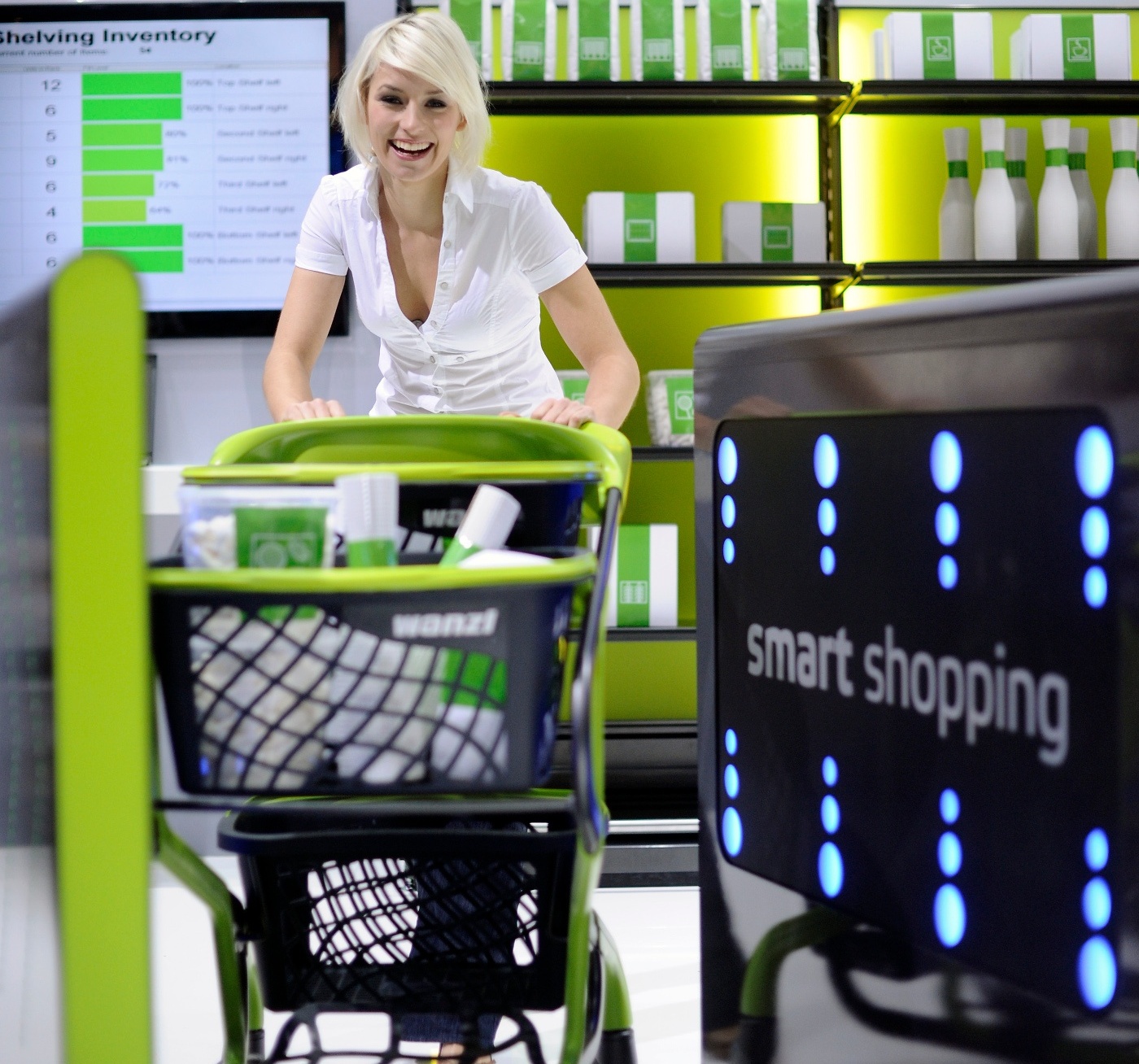
Smart cart – the intelligent shopping cart
The idea of a shopping cart that’s equipped with a navigation, search and payment function is nothing new. Digital signage solutions that can be integrated into the cart – at the handle or the front – and display pricing as well as add up the total amount are already available on the market. They are either simple barcode scanners or smart labels that have already been attached to the products during production and simply need to be deposited in the basket.
The payment process in particular is meant to be made easier by using RFID technologies such as near field communication (NFC). Identifying products with a smart tag takes place at a RFID gate at the checkout. Plastic shopping carts are especially well suited for this since they don’t interfere with the radio waves. Payment methods using a mobile device or fingerprints complete the available easy checkout options
Despite the fact that smart carts have so far not been able to become accepted nationwide, the development process continues: in the spring, the Portuguese company Follow Inspiration showcased an autonomous and self-driving shopping cart at the EuroCIS in Düsseldorf. A camera that’s embedded in the shopping cart identifies the customer’s face and fully automatically follows him/her throughout the store. According to eco, the Association of the German Internet Industry, the importance of intelligent shopping carts will increase considerably by 2020. Perhaps smartphones will soon replace handwritten shopping lists or apps will replace chips. That said, the good old metal four-wheeled shopping basket won’t be obsolete anytime soon.


